Fourth World refers to a sub-population subjected to social exclusion in global society, or stateless and notably impoverished or marginalized nations.

Another Green World is the third solo studio album by Brian Eno, released by Island Records on 14 November 1975. The album marked a transition from the rock-based music of Eno's previous releases toward the minimalist instrumentals of his late 1970s ambient work. Only five of its fourteen tracks feature vocals, a contrast with his previous vocal albums.

Jon Hassell was an American trumpet player and composer. He was best known for developing the concept of "Fourth World" music, which describes a "unified primitive/futurist sound" combining elements of various world ethnic traditions with modern electronic techniques. The concept was first articulated on Fourth World, Vol. 1: Possible Musics, his 1980 collaboration with Brian Eno.
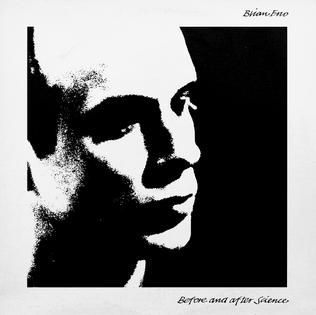
Before and After Science is the fifth solo studio album by Brian Eno, originally released by Polydor Records in December 1977 in the United Kingdom and by Island U.S. soon after. Produced by Eno and Rhett Davies, it is the first of Eno's popular music works to be published under his full name.

Ambient 1: Music for Airports is the sixth studio album by Brian Eno, released in 1978 by Polydor Records. It is the first of Eno's albums released under the label of ambient music, a genre of music intended to "induce calm and a space to think" while remaining "as ignorable as it is interesting". While not Eno's earliest entry in the style, it is credited with coining the term.

Remain in Light is the fourth studio album by the American rock band Talking Heads, released on October 8, 1980, by Sire Records. Produced by Brian Eno, his third album with the band, the album was recorded at Compass Point Studios in the Bahamas and Sigma Sound Studios in New York in July and August 1980.

Pygmy music refers to the sub-Saharan African music traditions of the Central African foragers, predominantly in the Congo, the Central African Republic and Cameroon.
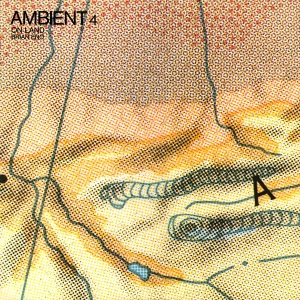
Ambient 4: On Land is the eighth solo studio album by Brian Eno, released in March 1982 by EG Records. It was the final edition in Eno's Ambient series, which began in 1978 with Ambient 1: Music for Airports. The album was released to critical acclaim, and is recognised along with its predecessors as a landmark album in the history of the ambient genre.

The Pearl is the second collaborative studio album by Harold Budd and Brian Eno, released in August 1984 by Editions EG and produced by Eno and Daniel Lanois in Hamilton, Ontario. The Pearl is similar to Budd and Eno's previous collaboration, Ambient 2: The Plateaux of Mirror (1980), consisting mostly of subtly treated piano textures, but with more pronounced electronic treatments and nature recordings. The album has been well received by music critics, and is considered by some as a landmark work in ambient music.

No New York is a No Wave compilation album released in 1978 by record label Antilles under the curation of producer Brian Eno. Although it only contains songs by four different artists, it has been considered important in defining and documenting the scene and movement, with the name "no wave" being influenced by that of the album according to some accounts.

Here Come the Warm Jets is the debut solo album by Brian Eno, released on Island Records on 8 February 1974. It was recorded and produced by Eno following his departure from Roxy Music, and blends glam and pop stylings with avant-garde approaches. The album features numerous guests, including several of Eno's former Roxy Music bandmates along with members of Hawkwind, Matching Mole, Pink Fairies, Sharks, Sweetfeed, and King Crimson. Eno employed unusual directions and production methods to coax unexpected results from the musicians.

My Life in the Bush of Ghosts is the first collaborative studio album by Brian Eno and David Byrne, released in February 1981. It was Byrne's first album without his band Talking Heads. The album integrates sampled vocals and found sounds, African and Middle Eastern rhythms, and electronic music techniques. It was recorded before Eno and Byrne's work on Talking Heads' 1980 album Remain in Light, but problems clearing samples delayed its release by several months.
Aïyb Dieng is a Senegalese drummer and percussionist specializing in hand drums. He has recorded two solo album, including Rhythmagick (1995), and has worked with a wide range of musicians, including as a regular collaborator of bassist/producer Bill Laswell.
Loop Guru is a worldbeat group consisting of bassist/guitarist Salman Gita and programmer Jamuud. They first met around 1980 and initially played together in The Transmitters and released their debut single as Loop Guru, "Shrine", in 1992. The band's music is a melange of Asian and Western music, infusing Western dance beats with the rich textures and sounds of Indonesian gamelan and traditional Indian music. Heavy emphasis is placed on electronic samples of traditional instruments, voices, and miscellaneous sounds.
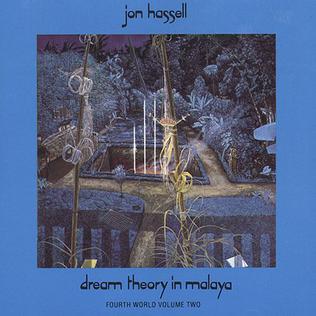
Dream Theory in Malaya: Fourth World Volume Two is an album by Jon Hassell, released in 1981. It is the sequel to his collaboration with Brian Eno, Fourth World Vol. 1: Possible Musics, which was released the previous year. The recording draws influence from the culture of the Senoi people of Malaya.
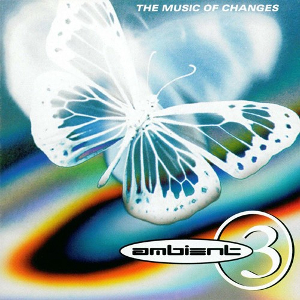
Ambient 3: Music Of Changes is a 1994 compilation album released by Virgin Records as part of its Ambient series. The compilation was issued as a double CD.

(No Pussyfooting) is the debut studio album by the British duo Fripp & Eno, released in 1973. (No Pussyfooting) was the first of three major collaborations between the musicians, growing out of Brian Eno's early tape delay looping experiments and Robert Fripp's "Frippertronics" electric guitar technique.

Power Spot is an album by American trumpet player and composer Jon Hassell recorded in 1983 and 1984 and released on the ECM label.

Aka/Darbari/Java: Magic Realism is a 1983 album by American trumpet player and composer Jon Hassell, released on the label Editions EG. It was co-produced by Daniel Lanois and features Abdou M'Boup on drums.
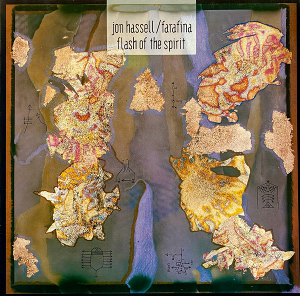
Flash of the Spirit is an album by the American musician Jon Hassell and the Burkinabé musicians Farafina. It was released in 1988, with an American release the following year. A remastered edition was released in 2020.

















